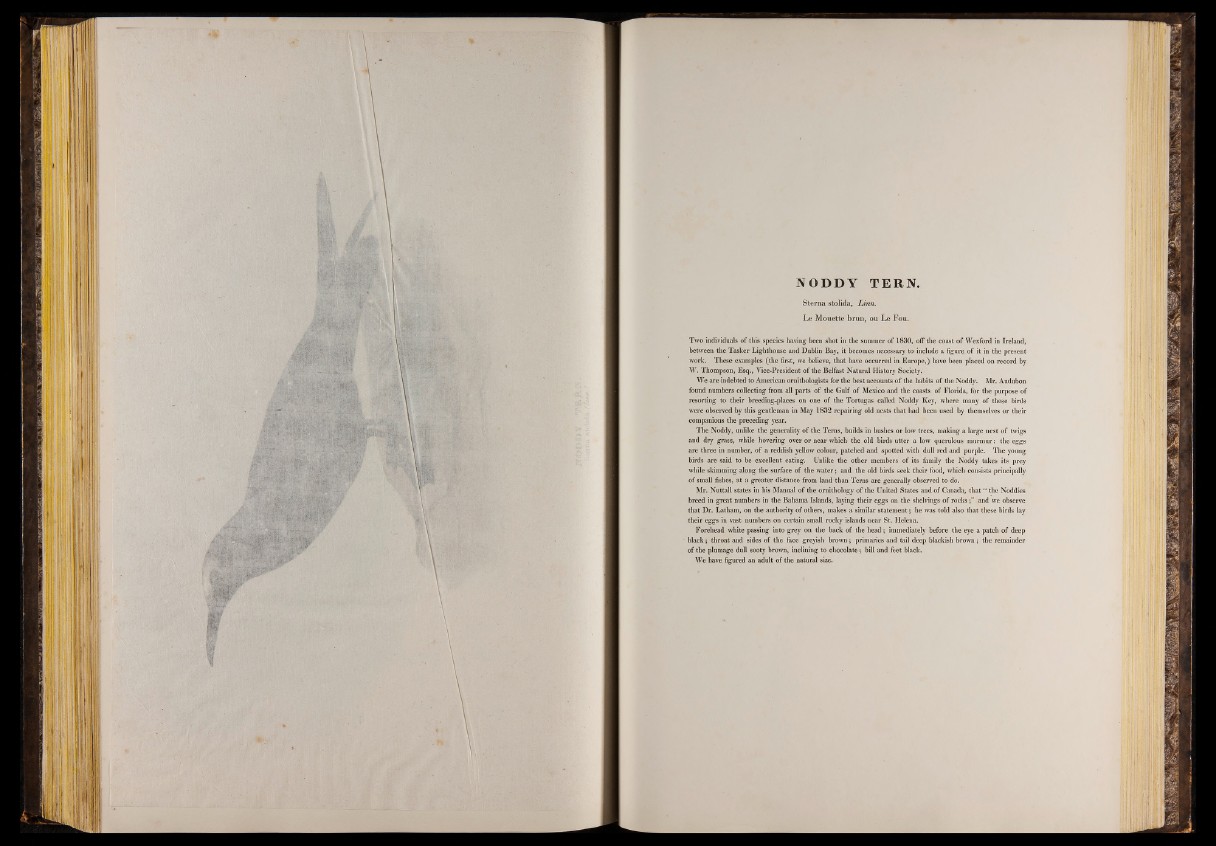
N O D D Y TERN.
Sterna stolida, Linn.
Le Mouette brun, ou Le Fou.
Two individuals of this species having been shot in the summer of 1830, off the coast of Wexford in Ireland,
between the Tasker Lighthouse and Dublin Bay, it becomes necessary to include a figure, of it in the present
work. These examples (the first, we believe, that have occurred in Europe,) have been placed on record by
W. Thompson, Esq., Vice-President of the Belfast Natural History Society.
We. are indebted to American ornithologists for the best accounts of the habits of the Noddy. Mr. Audubon
found numbers collecting from all parts of the Gulf of Mexico and the coasts of Florida, for the purpose of
resorting to their breeding-places on one of the Tortugas called Noddy Key, where many of these birds
were observed by this gentleman in May 1832 repairing old nests that had been used by themselves or their
companions the preceding year.
The Noddy, unlike the generality of the Terns, builds in bushes or low trees, making a large nest of twigs
and dry grass, while hovering over or near which the old birds utter a low querulous murmur: the eggs
are three in number, of a reddish yellow colour, patched and spotted with dull red and purple. The young
birds are said to be excellent eating. Unlike the other members of its family the Noddy takes its prey
while skimming along the surface of the water; and the old birds seek their food, which consists principally
of small fishes, at a greater distance from land than Terns are generally observed to do.
Mr. Nuttall states in his Manual of the ornithology of the United States and of Canada, that “ the Noddies
breed in great numbers in the Bahama Islands, laying their eggs on the shelvings of r o c k s a n d we observe
that Dr. Latham, on the authority of others, makes a similar statement; he was told also that these birds lay
their eggs in vast numbers on certain small rocky islands near St. Helena.
Forehead white passing into grey on the back of the head; immediately before the eye a patch of deep
black; throat and sides of the face greyish brown; primaries and tail deep blackish brown; the remainder
of the plumage dull sooty brown, inclining to chocolate; bill and feet black.
We have figured an adult of the natural size.